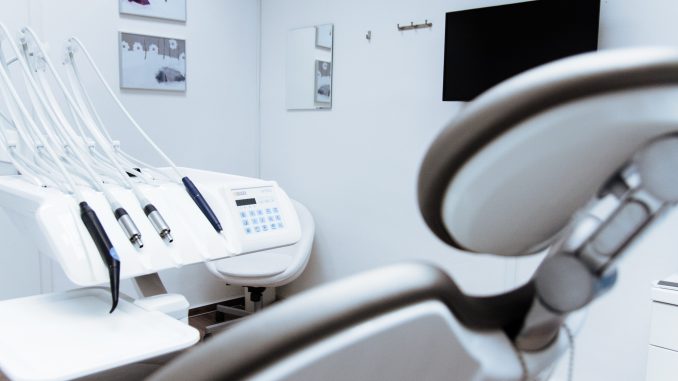
Imagine a patient going to the dentist and coming out with more pathogens than when they arrived. It’s a possible scenario when the dental equipment used to treat them is contaminated. As a result, dentists must strive to eliminate the possibility of contaminating dental equipment.
To do this, dentists must follow strict rules to keep pathogens from spreading on their tools and where they treat patients. They can keep their equipment clean by using autoclave bags and following procedures like thoroughly cleaning equipment.
Here are some more detailed methods dentists use to clean their tools and prevent contamination.
- Autoclave
Finding high-quality bags effective for sterilizing equipment is a great option. Autoclave bags help ensure dental instruments are as clean and sterile as possible. It is imperative, to begin with these bags since they are self-sealing sterilization pouches that get the sterilizing agent onto every part of the equipment.
The bags can also withstand the extreme conditions of steam sterilization without losing their softness or strength. Additionally, they have color-changing indicators to show whether the pouch has been sterilized by steam or chemical means.
- Dry Your Tools
Photo by Kenny Eliason on Unsplash
Before sterilizing your instruments in an autoclave, you must ensure they have no moisture. Sterilizers can only get rid of the water they add to your tools. So, if your instruments are wet when you put them in a sterilizer, they will come out wet. The packaging will also get wet because of this. Unfortunately, damp packaging can pull bacteria and moisture from a person’s skin through it, which makes it more likely that the instruments will get contaminated.
- Proper Tool Handoff
The Centers for Disease Control and Prevention and the Occupational Safety and Health Administration explain the steps you should take before bringing contaminated equipment into the sterilization room.
It’s vital to keep one-time-use items apart from reusable ones. Sharp things should be handled carefully and thrown away in the “sharps” bin. For the duration of the operation, dentists must wear heavy-duty gloves.
- Cleaning
Even though you can sterilize your instruments with autoclave pouches, you must clean them first. It helps eliminate any visible dirt the autoclave might have missed, no matter how slim the chances. These are some of the ways to do this.
Methods of Thorough Cleaning
It is essential to keep finding new ways to clean your dental tools that have become available as technology and sanitation have improved. It ensures that the instruments are thoroughly sterilized and reduces employees’ time handling them.
A few of the most frequently used disinfectants are as follows:
- Instrument washers – There are also automatic machines for washing dental equipment. Instrument washers with thermal disinfectors can treat each instrument with heat and a chemical disinfectant.
- Ultrasonic cleaners – One solution is to use ultrasonic cleaning. It helps break up grime and dirt on instruments using sound waves.
- If nothing else works, you can scrub your instruments by hand to eliminate any last bits of dirt.
- Inspect Tools and Equipment
Photo by Daniel Frank on Unsplash
After each piece of equipment has been cleaned, it must be inspected, dried, and put in its pouch. Both the tool and its sterilization would be safe inside containers. After opening, you must discard each pouch.
- Pre-Soak Instruments
You can start by soaking your dental tools in water before you use them. This ensures that it stays clean over time and keeps you from scrambling when more than one patient needs a few extra tools.
This also keeps patients safe because you won’t have to worry about pathogens or other biological debris drying on the tools you’ll use to care for patients. You can take it further and soak your instruments in a cleaning solution or use a spray gel to prevent organic parts from getting hard.
- Keep Safe
It’s always right to wear PPE, or personal protective equipment, to keep yourself safe. This technical term refers to the masks, gloves, and safety glasses that a dentist always wears to keep himself safe.
This gear is essential because it protects the dentist from getting sick from microbes and keeps them from spreading bacteria from their skin to the instruments. More importantly, you must ensure that your gear is strong enough to last through a lot of use before it breaks.
8. Loading for sterilization
Photo by Erick Tang on Unsplash
Last but not least, you can also have tools for loading other sterilizing machines or equipment besides the autoclave. You can also minimize the risk of cross-contamination by following infection control procedures.
Therefore, you must transport equipment requiring this thorough cleaning procedure to a separate area. If the protocol set by the American Dental Association (ADA) is not followed, tools previously cleaned and decontaminated can quickly become unsafe for use again.
Conclusion
If you do all of the above, you can be sure that when your patients come to see you, your tools will be free of contamination and safe for use. These steps ensure that any bacteria, whether they come from you or your patients, never leave the chair. The ultimate priority is to keep the dental office clean and safe.
